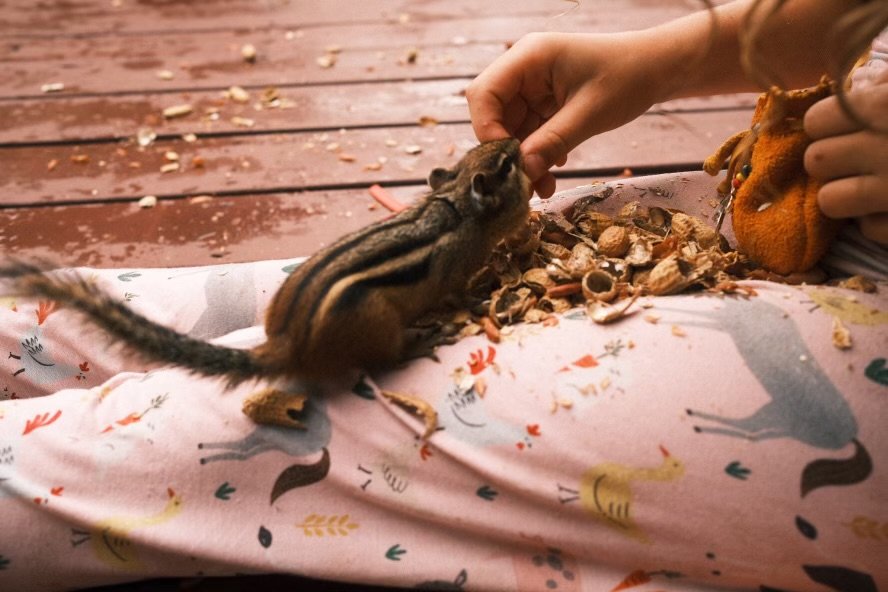
noticing nature’s voices
Each creature has a unique purpose and way of communicating. Like all meaningful connections, our relationship with wildlife is built on trust.
Engaging with nature reveals the many ways communication happens, which we may not always recognize at first. Through the lens of wildlife rehabilitation, we can deepen our empathy and open our eyes to the shared characteristics we have with creatures we might never have thought.
This doesn’t mean projecting our complex emotions onto animals. Rather we spend the time learning to communicate in the way wildlife does, through a simplicity and a purity. Instead of fostering dependency, we should aim for a balanced relationship. One grounded in intention, observation, admiration, and, only when absolutely necessary, intervention.
Calling All Birders
Join our birding community from anywhere in the world!
Whether it’s a bird that took your breath away, one you’ve always loved, or just a curious little feathered visitor, snap a photo and share the moment with us. Tell us what it meant to you, and we’ll feature it on our social media. We might even add a fun fact or two about your feathered friend.
Rethinking Bats: Nature’s Unsung Hero
There are a lot of misconceptions about bats. Often portrayed as something scary, these animals are actually a natural answer to several pressing issues. Bats are not our foe, but rather the enemies of our enemies: mosquitoes and other pests that destroy crops. In just one hour, a single bat can eat up to 1,200 insects, including mosquitoes, beetles, moths, and grasshoppers. By consuming large numbers of these pests, bats naturally help control populations that would otherwise require chemical management.
In fact, bats save the U.S. agricultural industry an estimated $3.7 billion each year in pest control. The ripple effect of encouraging bat populations means less need for pesticides. In turn, this reduces pesticide runoff into waterways and our food supplies. Installing something as simple as a bat house can provide bats a safe space to live and contribute to a balanced ecosystem.
For those who fear bats, it’s worth noting that bats want to avoid us as much as we may want to avoid them! They are an ideal example of how humans and wildlife can form harmonious relationships that reduce our reliance on constant chemical intervention.
David Whiteside of Tennessee Riverkeeper highlights the significant threats that some bat species face in Tennessee below...
A generational friendship…
A family legacy can be many things; there are so many different types of rituals and traditions. In our family, it’s to get to know every chipmunk by name.
In the heart of what feels like nowhere, Ontario, stands a tiny cabin perched on the banks of a small lake. This cabin is the original homestead of our Finnish ancestors, who settled here generations ago. Rich in cultural heritage, it stands with respect to the Indigenous peoples and the wilderness that surrounds it. Some people and many animals call it home.
It’s a gift when a red fox visits every couple of decades to say hello, or when the pickerel leap as the sun begins to set. If you're not careful with your scraps, a curious black bear might come by to investigate the smells. And then there’s Percy, the seagull, who would sit on the roof and feast on the fish tossed his way.
But of all the creatures we’ve come to know, it’s the chipmunks who are the most familiar.
As a kid I remember the first time I was ever told of this family of chipmunks. The ones that will greet us on the porch as we begin to arrive. Watch your step! You never know who may be scurrying by.
My great great grandparents began this unfamiliar friendship, as most humans do when they bond with an animal, with food. With a handful of peanuts and excitement dancing in my heart, I sat. As the chipmunks began to draw near, I remained still and quiet. Waiting for the first one to crawl on to my lap and take an offering from my hand. Almost at disbelief that this tiny little creature could fit a peanut, almost half its size, in it’s little mouth. He shoved one, two, sometimes three or four into his ever stretching cheeks and dashed off the porch, down the steps, disappearing into the woods. Slowly I began to learn the names.
Some stood out more than others and created a memorable relationship. We still tell the stories of Shorty Martin (he had a stumpy tail), LT (he had an extra long tail), Tiny (you can guess why), and Chippy 1, 2, 3… who knows what we’re on now. The one that still makes us laugh is when we tell the story, Frank. Frank was named after my Iso Isa (Great Grandpa, picture two) because my Iso Isa lost his leg in a mill accident and little Frank had one of his front legs missing. But that never shortened little Frank’s personality. Each family member with their own names and stories from the summers they spent at our special place.
The previous image is of my daughter, 100+ years later, on the same ground that was settled for us. With the same excitement that we have all shared for the tiny face waiting in the window, hoping someone notices. Racing out the door, sitting quietly and still, anticipating the feeling if scratchy little feet crawling up her leg to grab a handful of peanuts.
As one line in my Iso Aiti’s (great grandmother’s) obituary reads “she knew each chipmunk by name”. From the first generation to the last, we continue to walk in the footsteps before us.






